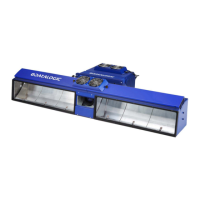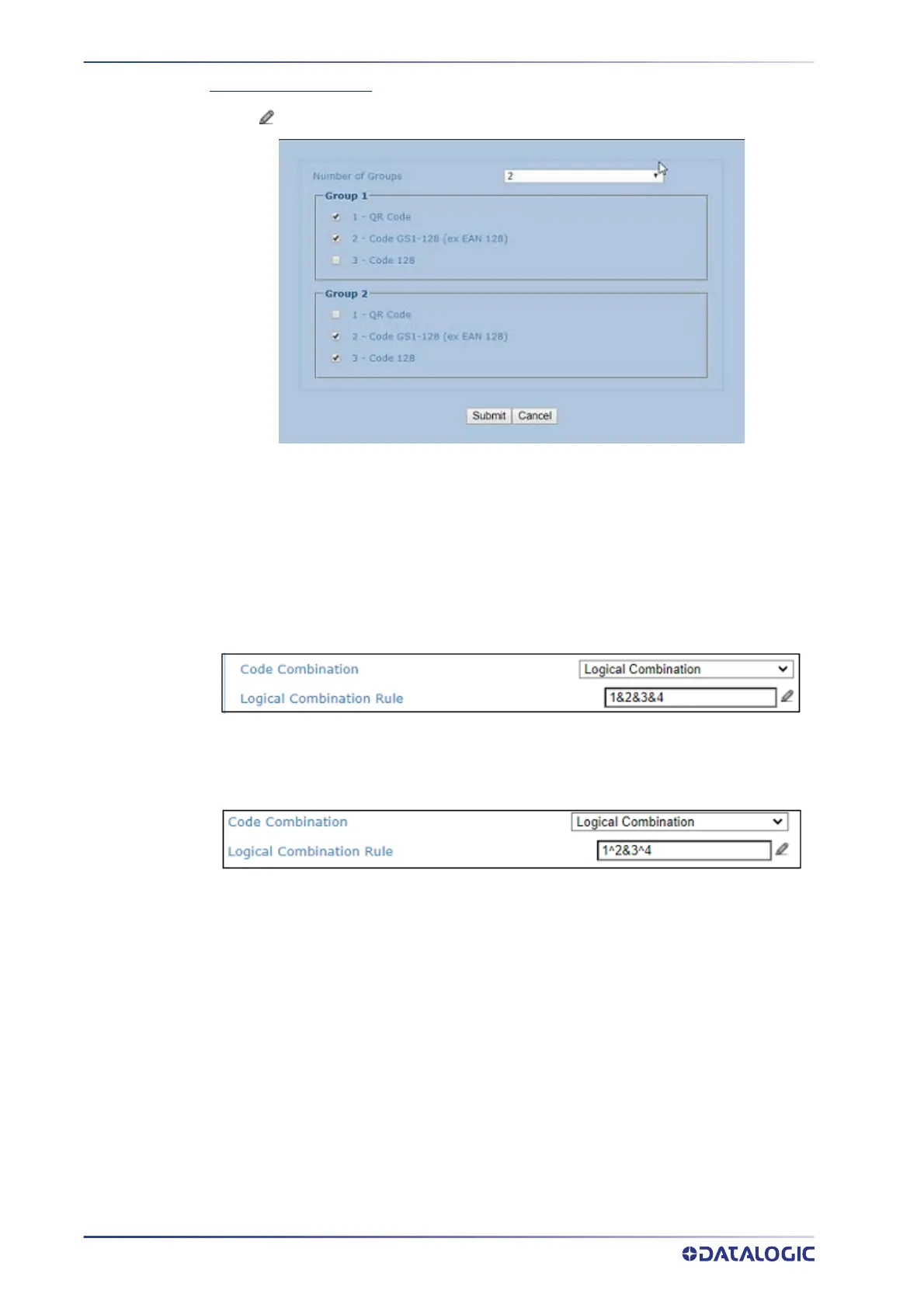E-GENIUS
162
AV7000 LINEAR CAMERA
Logical Combination Rule
Click to activate the Code Group selection dialog box.
Select the number of groups you wish to use from the Number of Groups drop-down list. Then
select the check box next to the Group/Code you wish to define. Click
Submit to save your
text to the origin window text field, or click
Cancel to return to origin window without
transferring text.
Groups and their order define the output message format, while each group identifies an
expected code or group of codes. When placing one bar code within a group, the camera will
fill that group location in the host message with only the code selected.
If you define the Logical Combination Rule to include Group 1 and Group 2 and Group 3 and
Group 4. The Logical Combination Rule parameter will appear as follows:
For the1&2&3&4 rule, when two or more codes are selected within the same group the
camera will fill this groups field with the first decoded bar codes listed in that group.
If you define the Logical Combination Rule to include two groups, one with Code 1 or 2 and the
second with Code 3 or 4 the Logical Combination Rule will appear as follows.
When editing the logical combination rule, proceed as follows:
•
Define the Barcode Settings indicating the type of expected code labels. It is possible to
define up to 10 different code types;
•
Define how many code types (groups) are expected by editing the combination rule
through the following logical operators. Each group may include one or more selected code
types.
The maximum number of groups to be defined for each rule string is 15.
If Local No Read Message is selected from the No Read Message drop-down list, the Group No
Read Messages parameter group is displayed requiring the definition of a Local No Read String
for each group.
Example
If three barcodes are enabled and barcode 1 and 2 are read successfully but barcode 3 is a no
read, the message could look like this:
<STX>12345678xxx,12345678xxx,noread <CR><LF>

